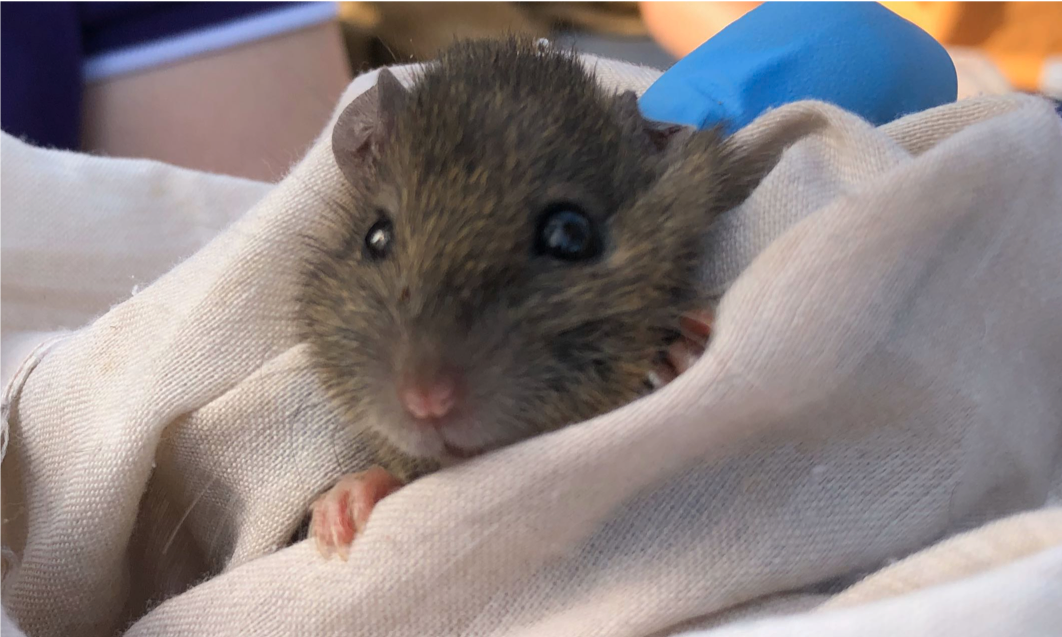Background
Introduced predators in Australia contribute to the continuing decline of native wildlife (Fisher et al. 2013). This is predominantly caused by the lack of fear prey species have when encountering these predators. This ‘prey naivety’, is thought to have caused the extinction of 30 native mammal species (Woinarski et al. 2015). Additionally 80% of failed reintroduction programmes can be attributed to introduced predators (Moseby et al. 2015). Current control methods consist of fencing, lethal culling, and translocations, but not all are successful in curbing the effects of introduced species to a manageable level for native wildlife (Gentle et al. 2017; Ringma et al. 2018). Consequently, exploring techniques that curb the negative impacts of introduced predators is crucial.
Predator avoidance training is an innovative field that aims to improve the response of native prey to these introduced predators (Blumstein & Daniel 2005). This technique will reduce prey naivety, and has already been successful in an array of taxa (Griffin 2003; Griffin & Evans 2003; Teixeira & Young 2014). By presenting an invasive predator and an adverse event simultaneously across multiple training sessions, this technique teaches animals to recognise and respond fearfully towards these predators. However, little research has assessed the efficacy of different methods and the influence animal temperament may have on these methods.
Aims
- To measure the temperament of the eastern chestnut mouse (Pseudomys gracilicaudatus) and yellow-footed antechinus (Antechinus flavipes)
- To assess whether these species have an innate fear towards introduced predators, and whether this can be changed through predator avoidance training
- To assess whether predator avoidance training improves reintroduction success
- To train individuals to use microchip automated nest boxes as a refuge from predators

Methodology
The temperament of wild-caught yellow-footed antechinus and eastern chestnut mice will be measured at Hidden Vale Wildlife Centre using the 'novel object test' and the 'trap docility test' (West et al. 2018). These behavioural tests will be conducted before and after predator avoidance training. Additionally, upon arrival to Hidden Vale, the animals’ reactions to a variety of predators will be observed and this will be compared to their reactions post-training.
During predator avoidance training, individuals will be exposed to a live predator and an unpleasant stimulus (such as a water pistol or pots and pans banging). The aim is for the unpleasant stimulus to encourage the animal to avoid the predator, eventually resulting in the predator being presented alone and the animal responding fearfully or with avoidance behaviours.
A three stage training programme will be followed in order to train both species to use microchip automated nest boxes. However, it is the first time these species have been taught to use this technology the length of training time is unknown.
Individuals will be reintroduced with their nestboxes so that we can monitor their use during this period. All released animals will have GPS and VHF tags, and trapping throughout this period will allow monitoring of their survival. The survival of individuals with predator avoidance training and those without will be compared to assess whether this technique is beneficial to reintroduction programs.
Expected outcomes
It is expected that the yellow-footed antechinus and the eastern chestnut mouse will successfully display predator avoidance behaviours, and learn to use microchip automated nest boxes following training in captivity. It is expected that these newly-learned behaviours will be beneficial to their survival post-release, and therefore trained animals will have increased survival compared to untrained animals. It is likely that animals with different temperaments will respond to training differently, and this difference will also influence their post-release survival.
References
Blumstein, DT & Daniel, JC 2005, 'The loss of anti-predator behaviour following isolation on islands', Proceedings of the Royal Society B: Biological Sciences, vol. 272, no. 1573, pp. 1663-8.
Fisher, DO et al. 2013, 'The current decline of tropical marsupials in Australia: is history repeating?', Global Ecology and Biogeography, vol. 23, no. 2, pp. 181-90.
Gentle, M, Speed, J, Allen, BL, Harris, S, Haapakoski, H & Bell, K 2017, 'The longevity of para-aminopropiophenone (PAPP) wild dog baits and the implications for effective and safe baiting campaigns', Environmental Science and Pollution Research, vol. 24, no. 13, pp. 12338-46.
Griffin, AS 2003, 'Training Tammar Wallabies (Macropus eugenii) to Respond to Predators: A Review Linking Experimental Psychology to Conservation', International Journal of Comparative Psychology, vol. 16, no. 2, pp. 111-29.
Griffin, AS & Evans, CS 2003, 'The role of differential reinforcement in predator avoidance learning', Behavioural Processes, vol. 61, pp. 87-94.
Moseby, KE, Carthey, AJR & Schroeder, T 2015, 'The influence of predators and prey naivety on reintroduction success; Current and future directions', in D Armstrong, M Hayward, D Moro & P Seddon (eds), Advances in Reintroduction Biology of Australian and New Zealand Fauna, CSIRO Publishing, Collingwood, Victoria, pp. 29-42.
Ringma, J, Legge, S, Woinarski, J, Radford, J, Wintle, B & Bode, M 2018, 'Australia's mammal fauna requires a strategic and enhanced network of predator-free havens', Nature Ecology & Evolution, vol. 2, no. 3, pp. 410-411.
Teixeira, B & Young, RJ 2014, 'Can captive-bred American bullfrogs learn to avoid a model avian predator?', Acta Ethologica, vol. 17, no. 1, pp. 15-22.
Woinarski, JCZ, Burbidge, AA & Harrison, PL 2015, 'Ongoing unravelling of a continental fauna: Decline and extinction of Australian mammals since European settlement', Proceedings of the National Academy of Sciences, vol. 112, no. 15, pp. 4531-40.
Acknowledgements
Australian Government Research Training Scholarship
Hidden Vale Wildlife Project Research Support Funding
Ecological Society of Australia
Sporting Shooters Association of Australia




